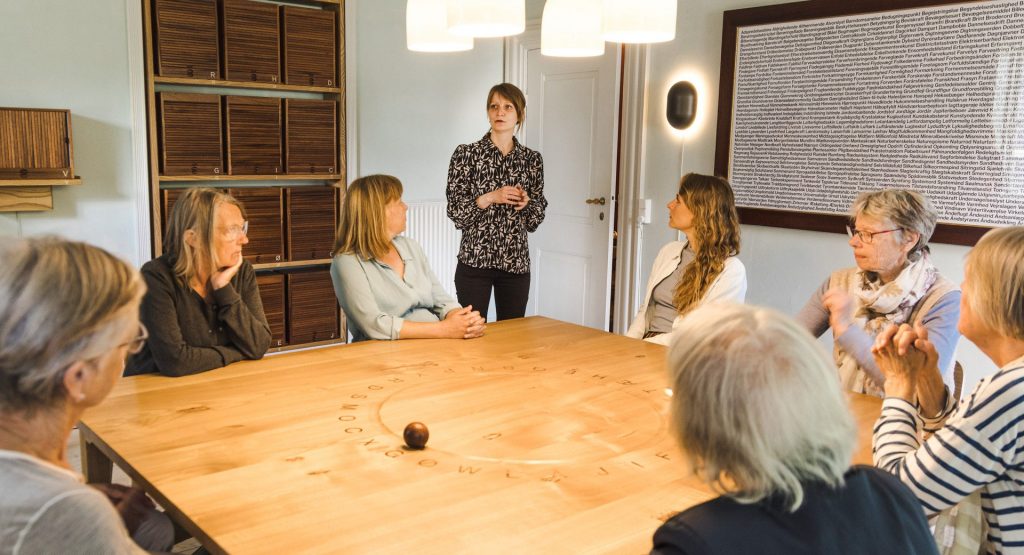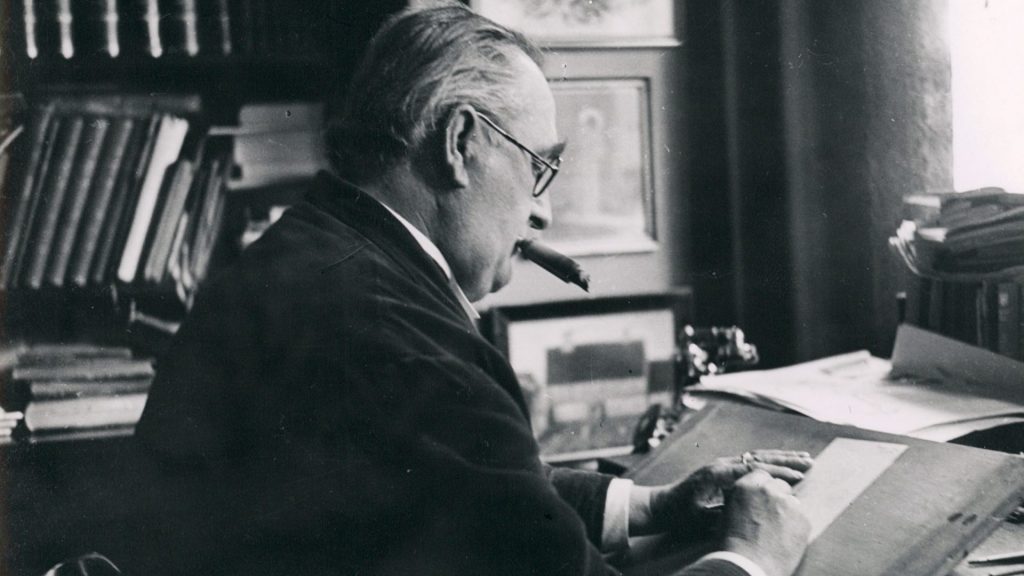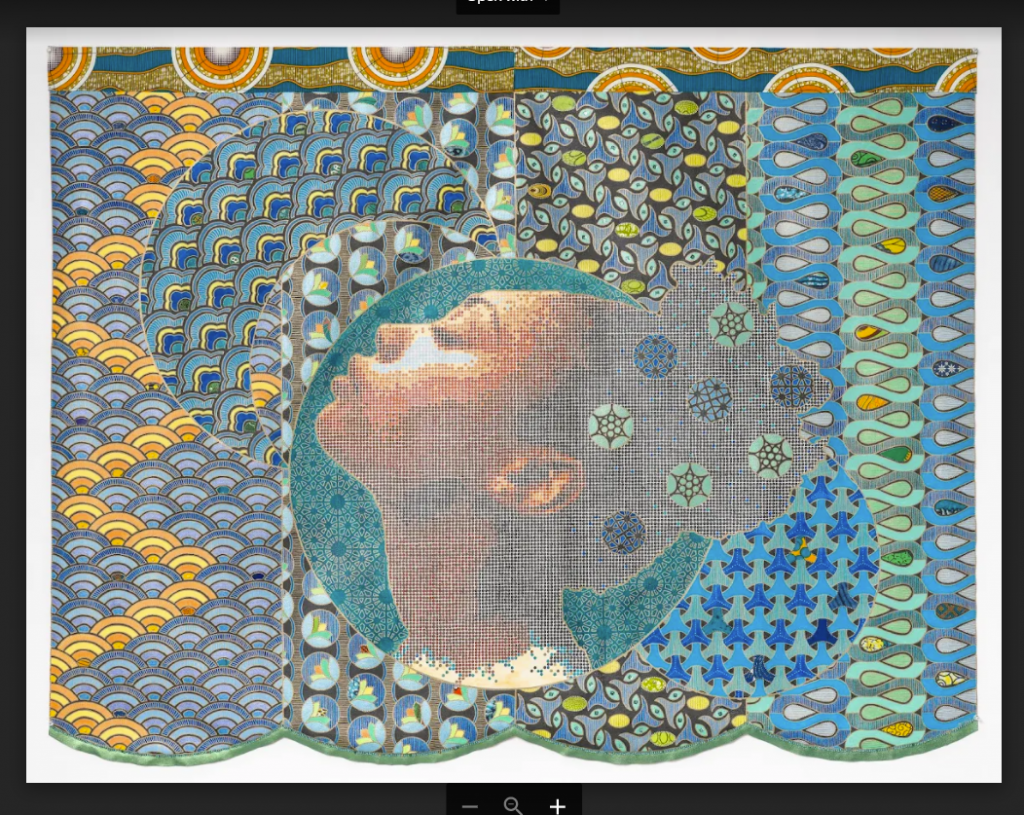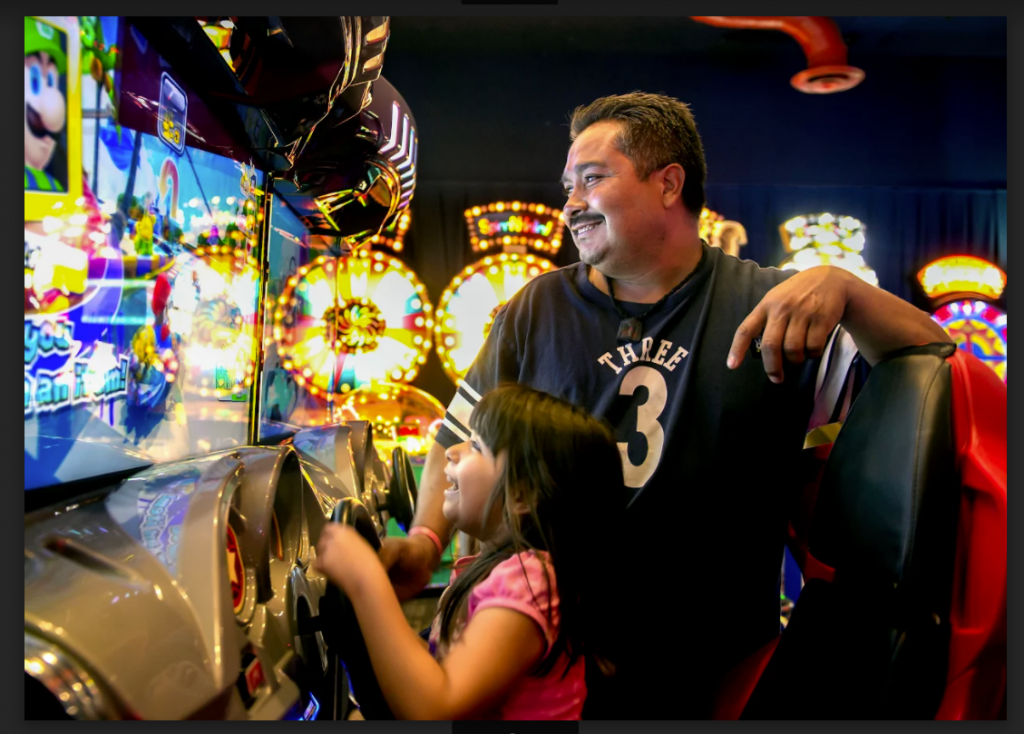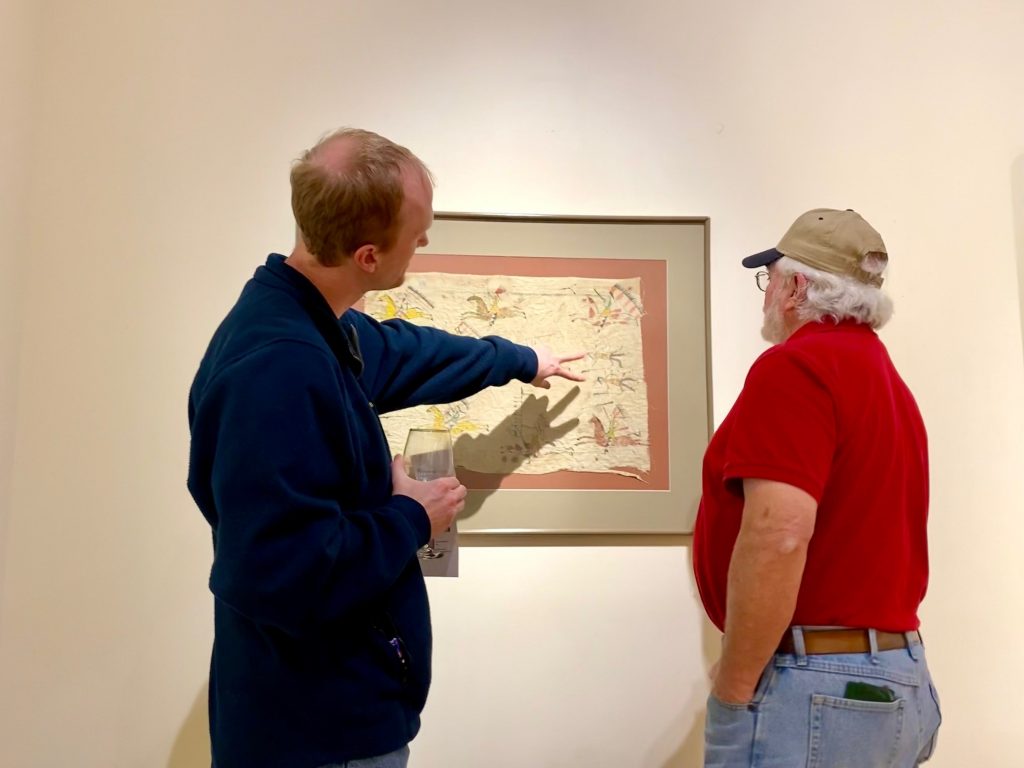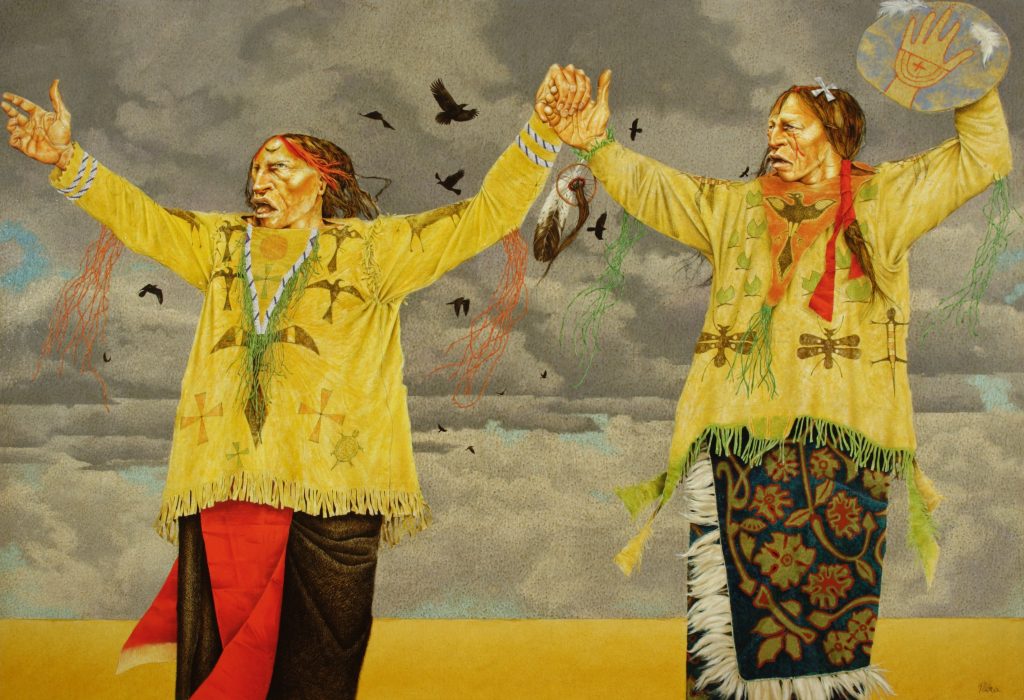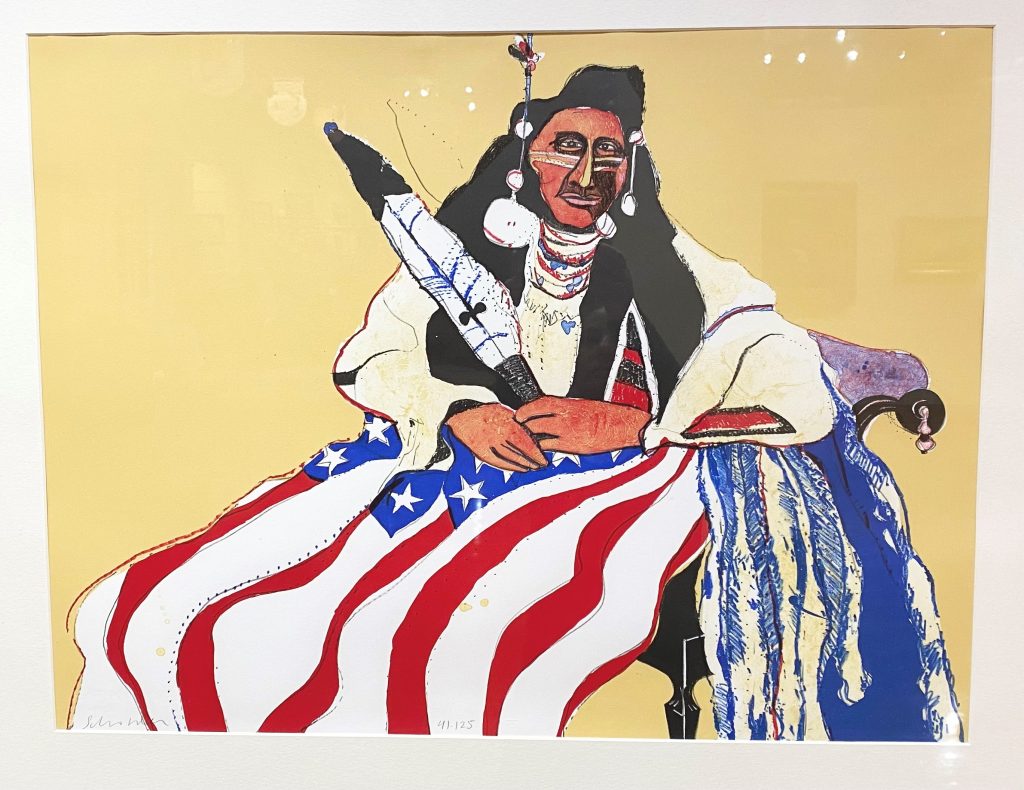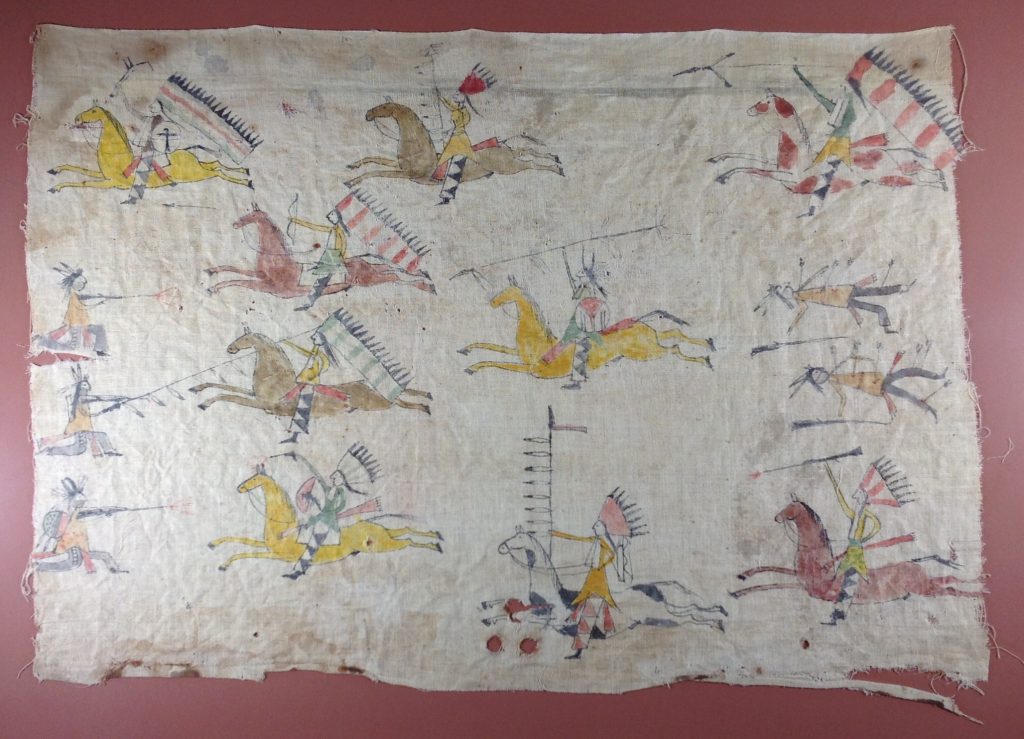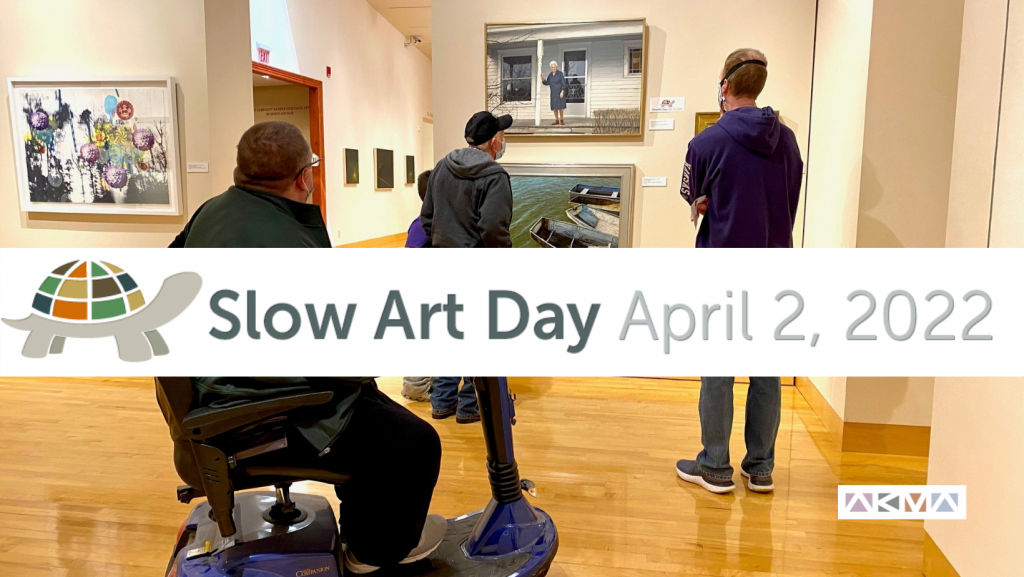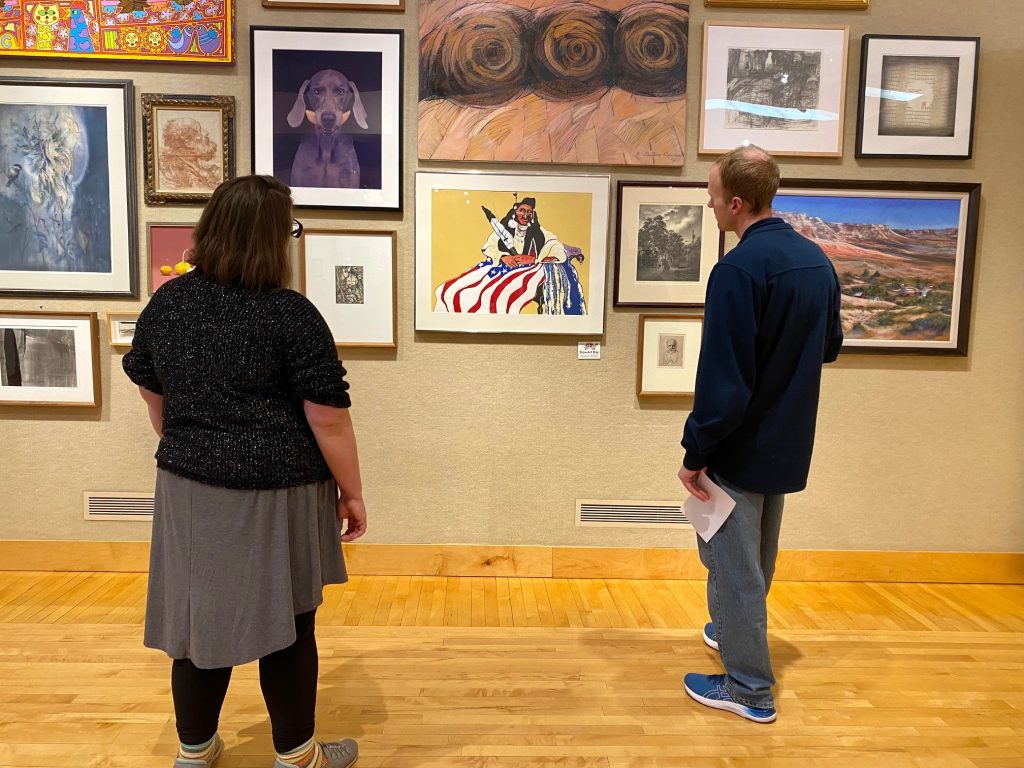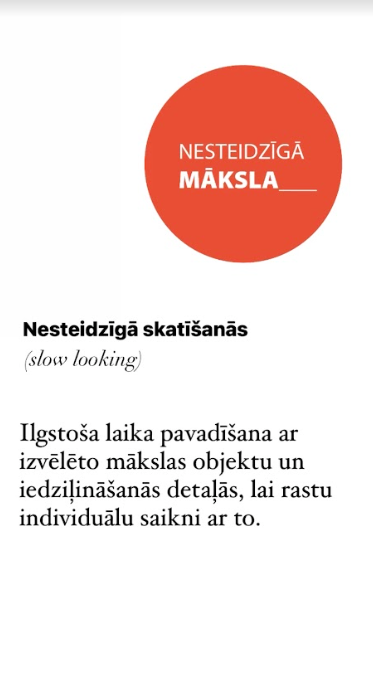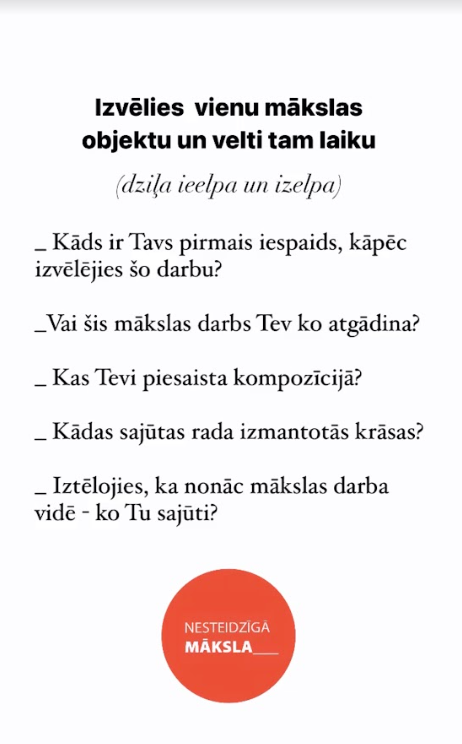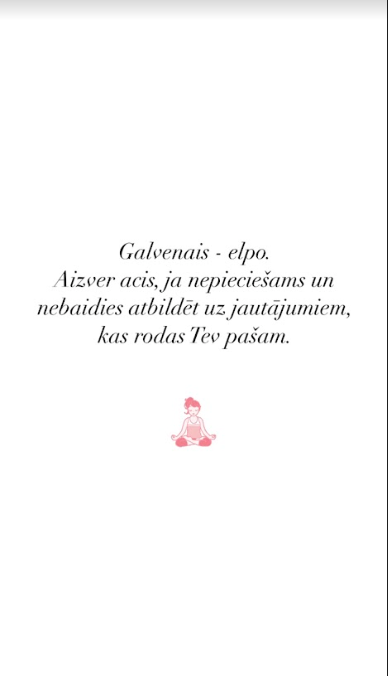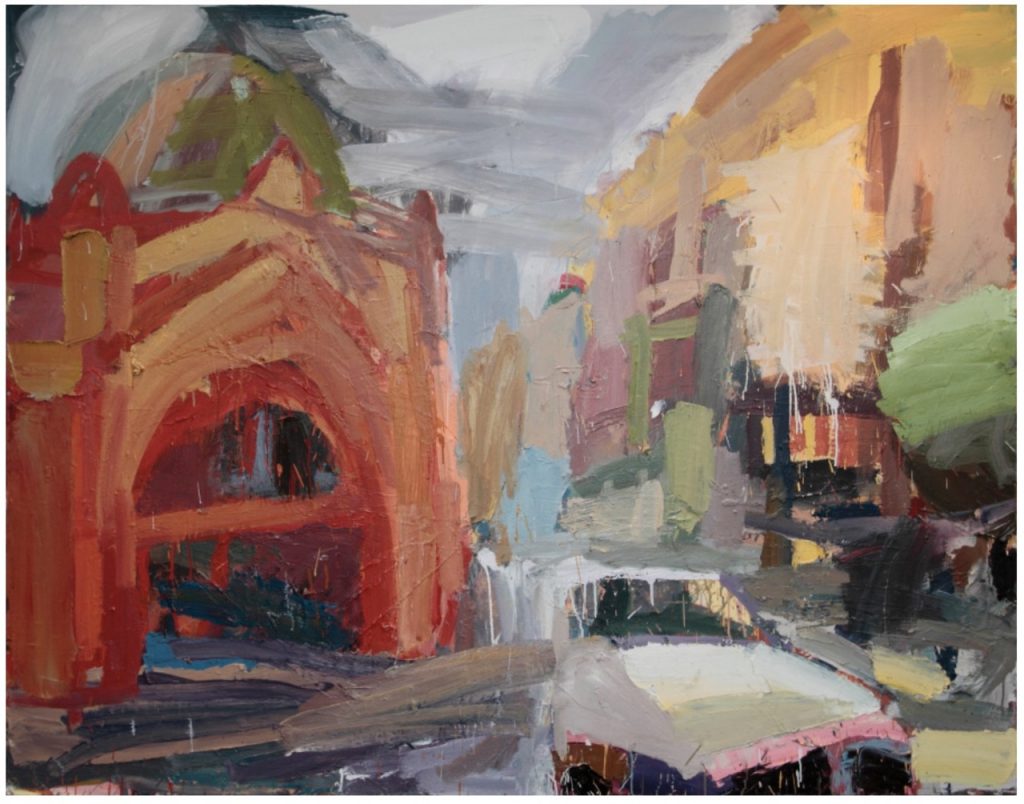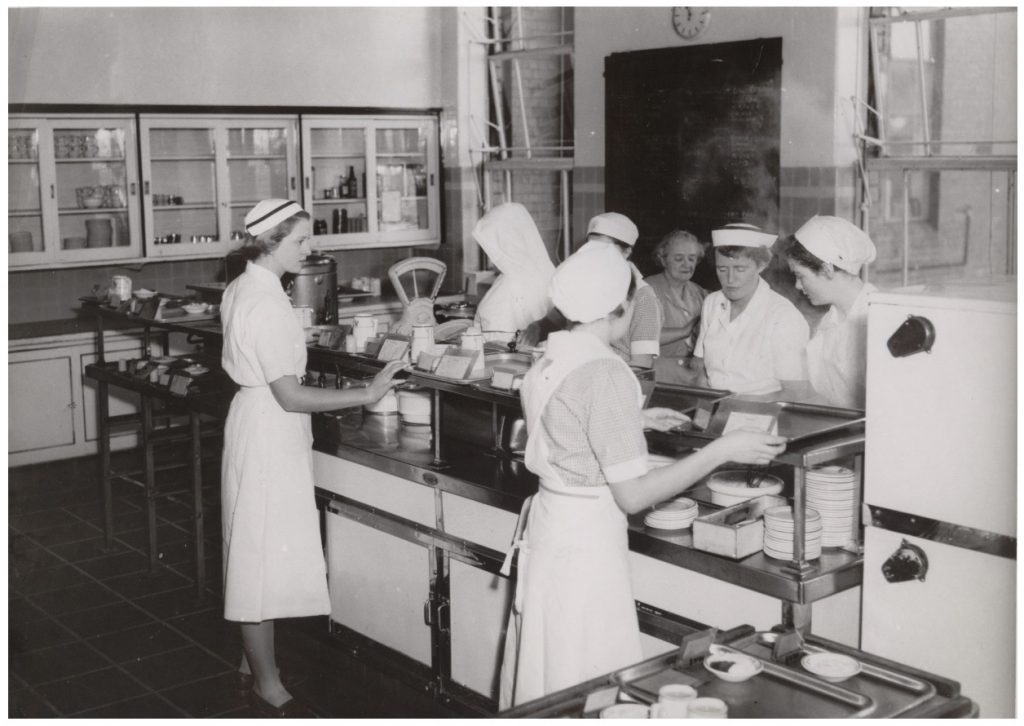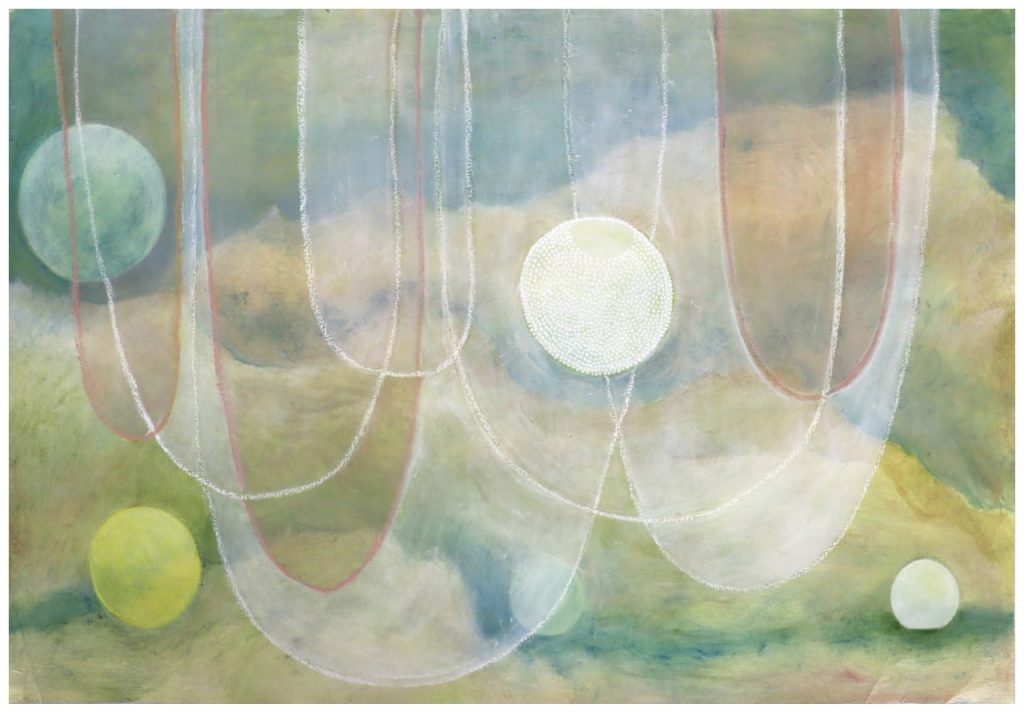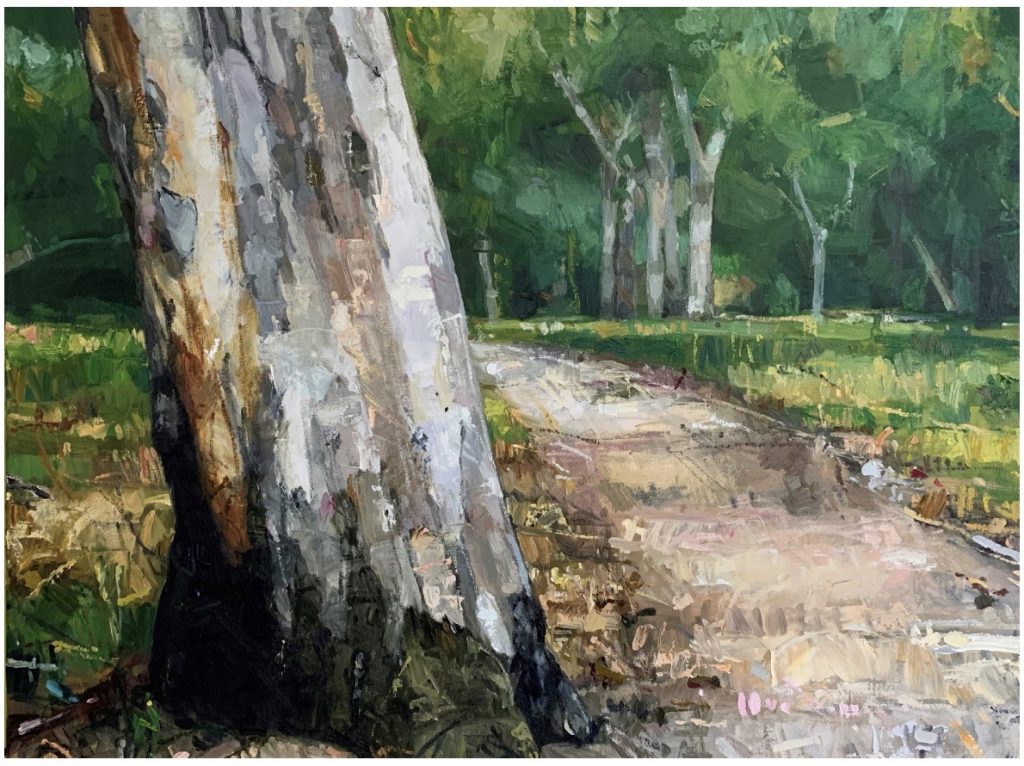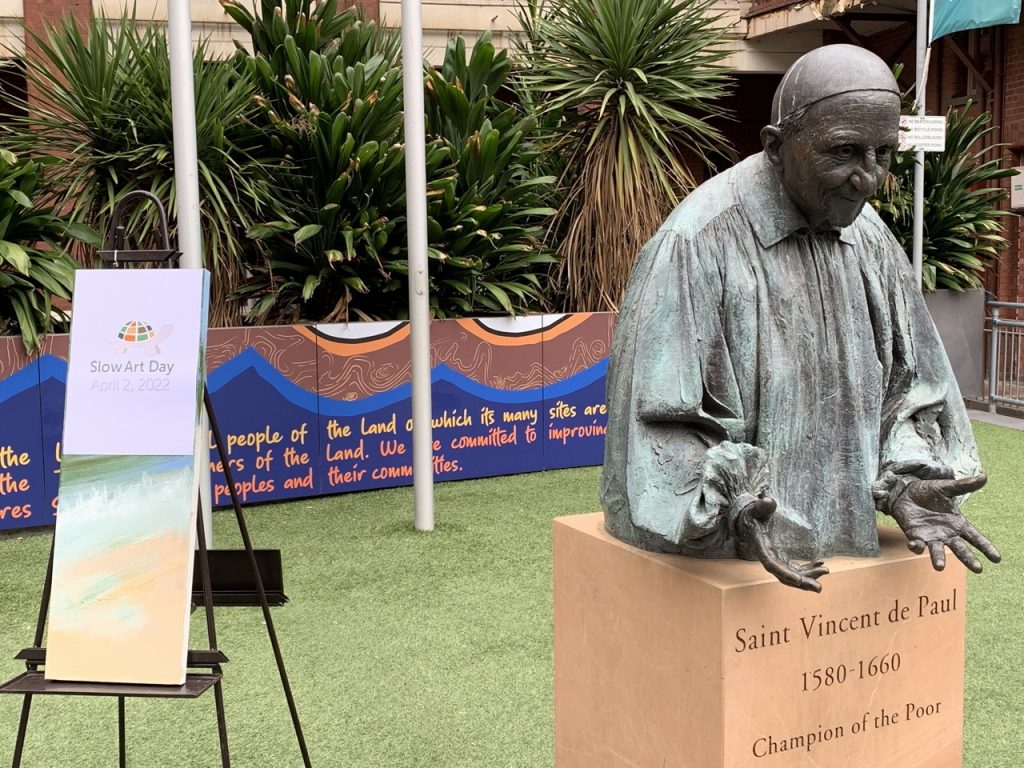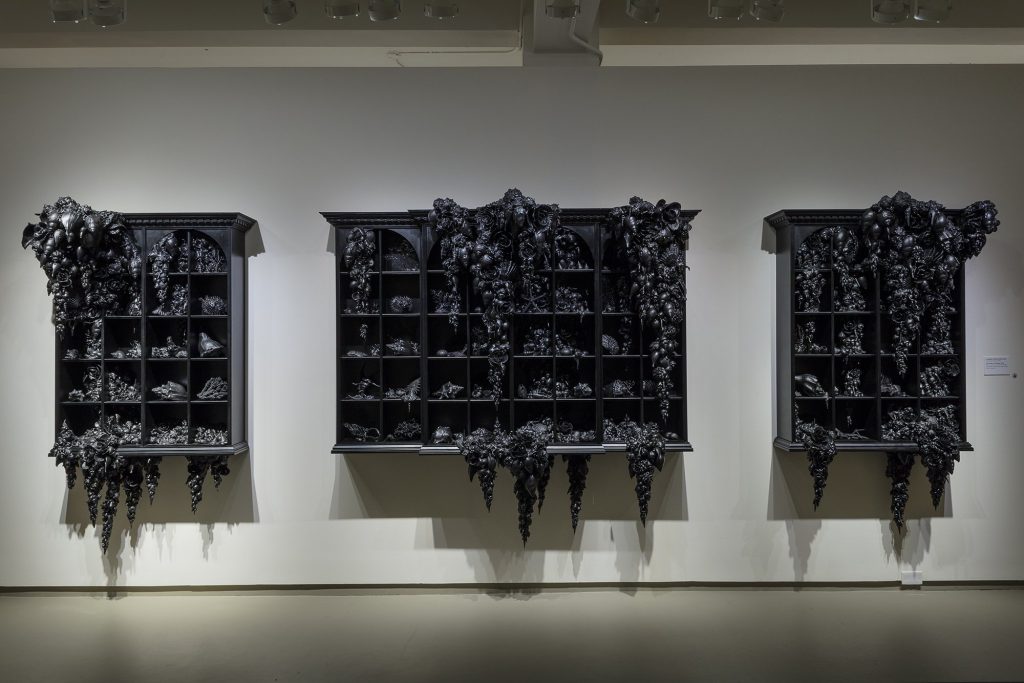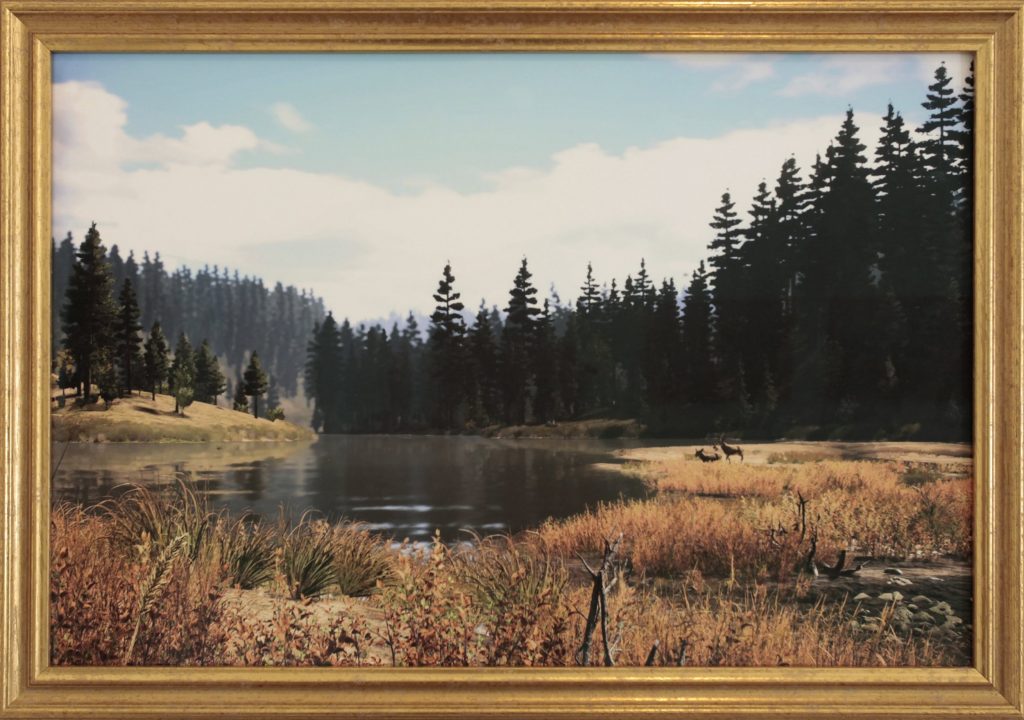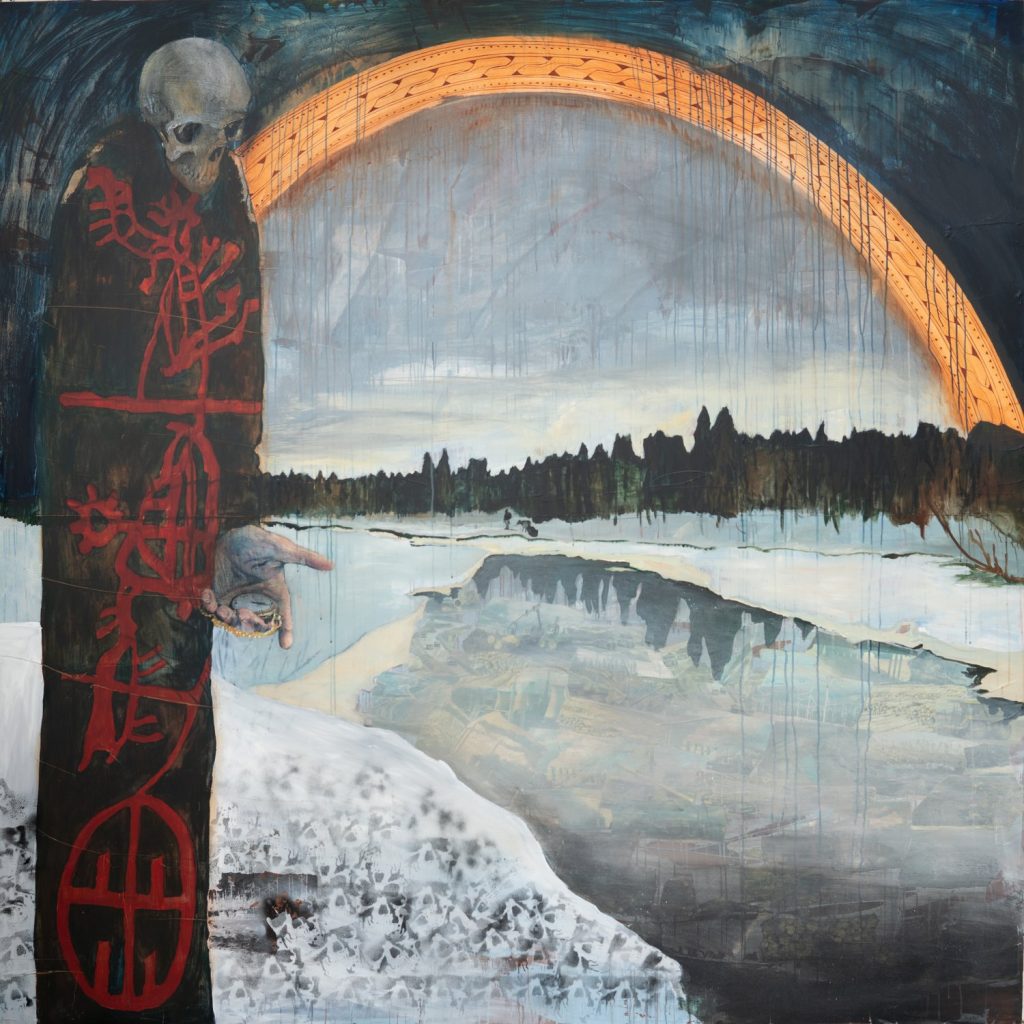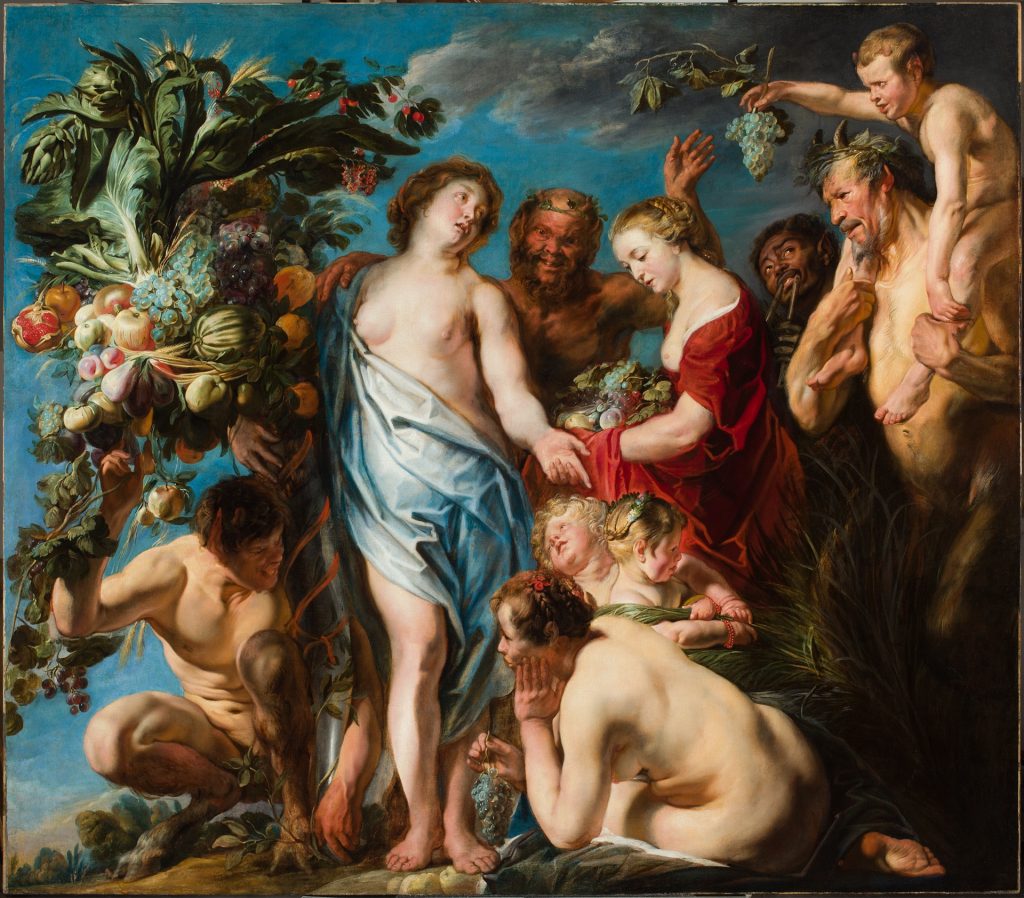For their second Slow Art Day, Northern Lights Gallery, based in Melfort, Canada and hosted by Sandra Dancy, focused on beauty as a temporary escape. Seven artists from Melfort – a city of about 6,000 in central Saskatchewan – offered one piece of their work for slow looking.
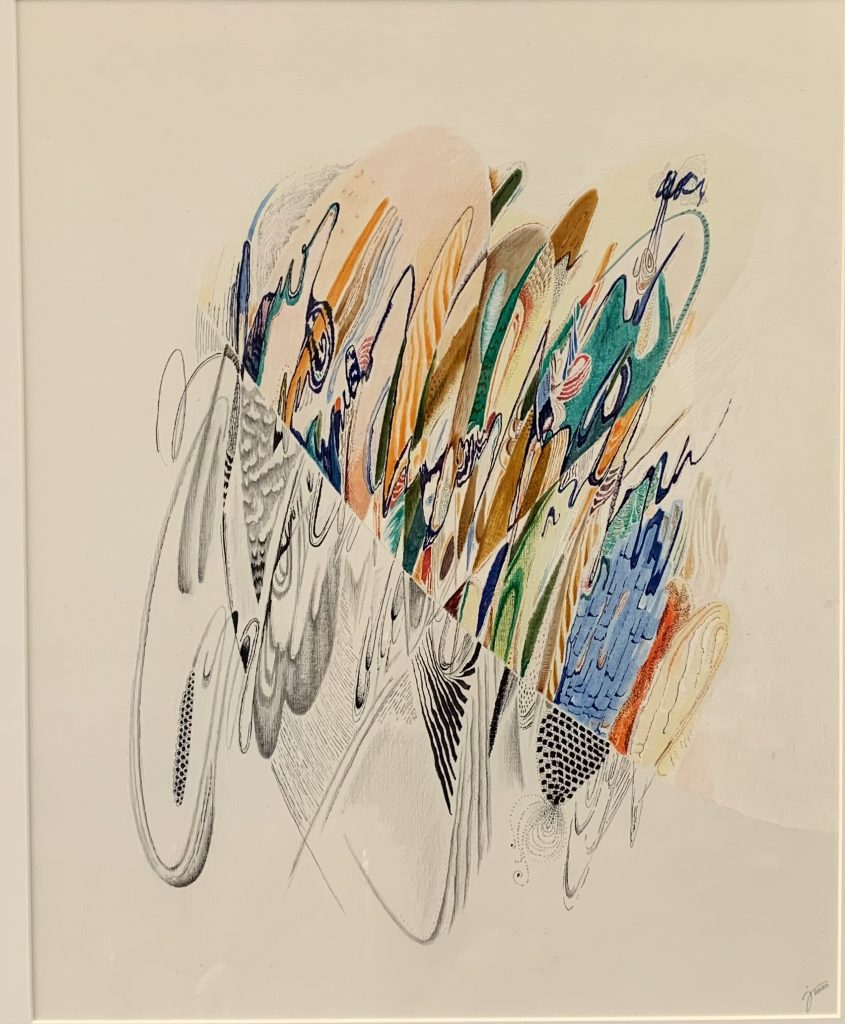
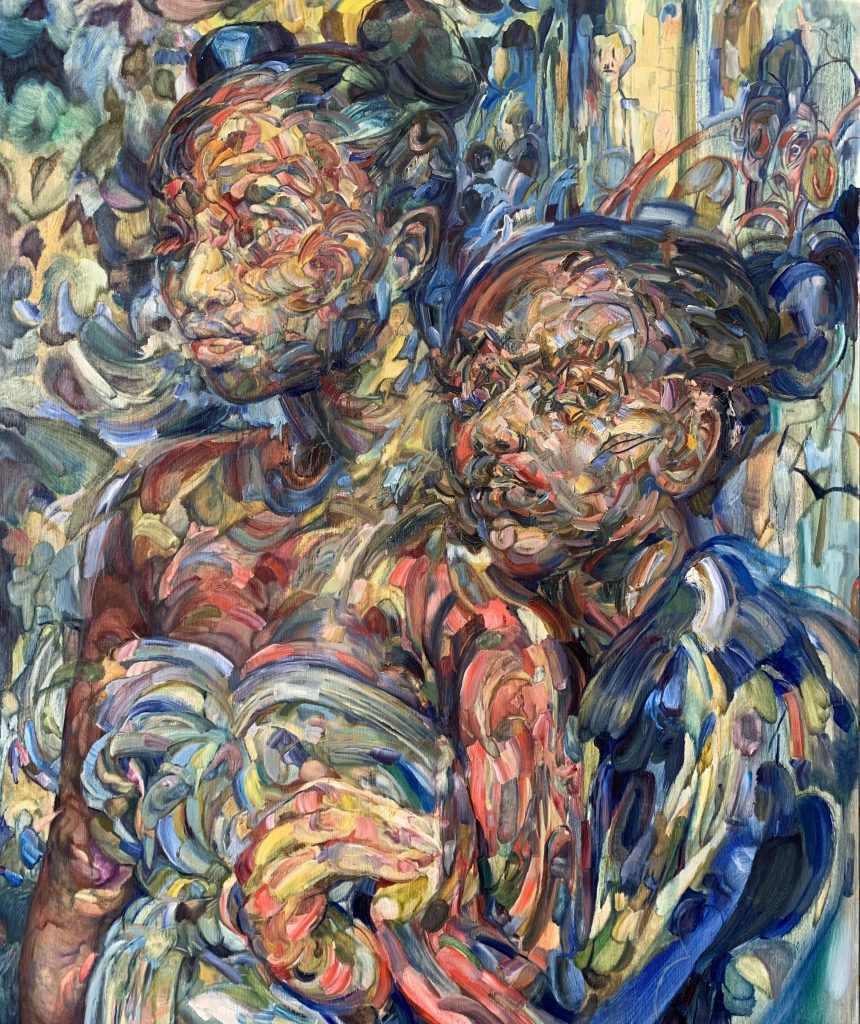
The seven artists participating were Randi Lalonde, Jen Kjelsus, Linsey Levendall, Darwin McLeod, Julie Schmale and Kylie Severight.
Dancy’s vision for the Slow Art Day was simple: slow people down to enjoy beauty and use art as therapy in a difficult world.
She said:
Slow Art Day is the perfect way to focus on the artistic beauty that is everywhere and to briefly escape the many things going wrong in the world. It reinforces how therapeutic art is for the artists and the viewers.
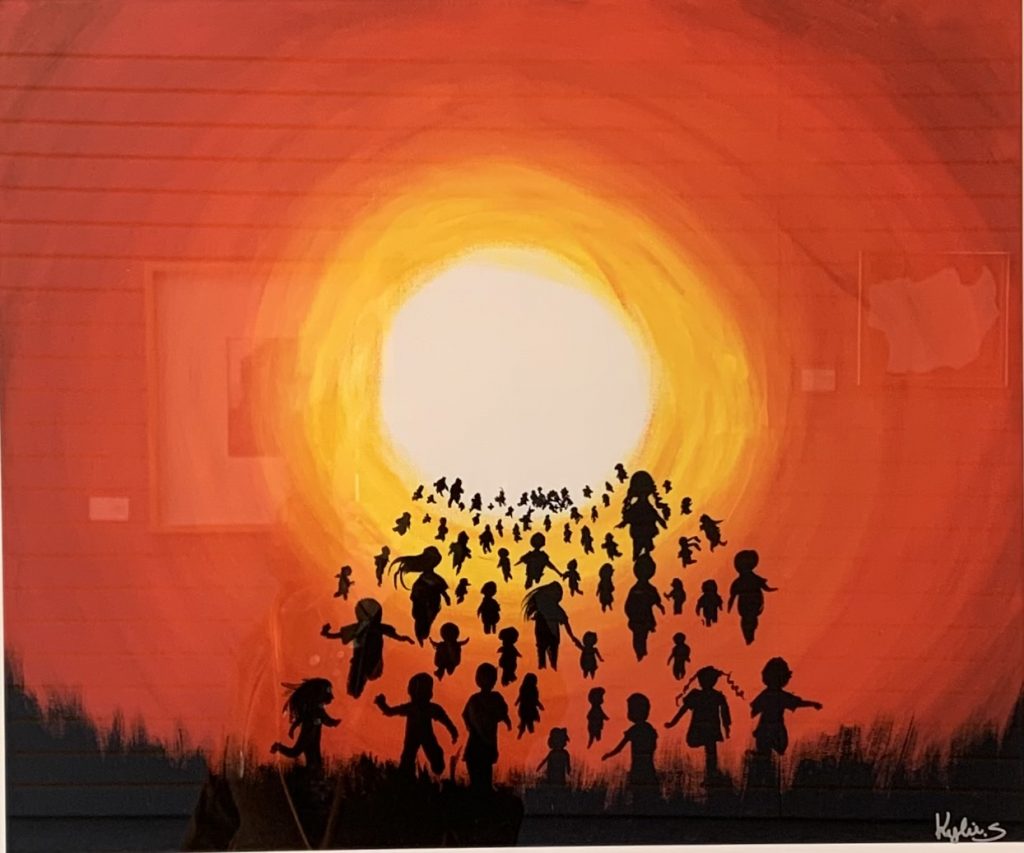
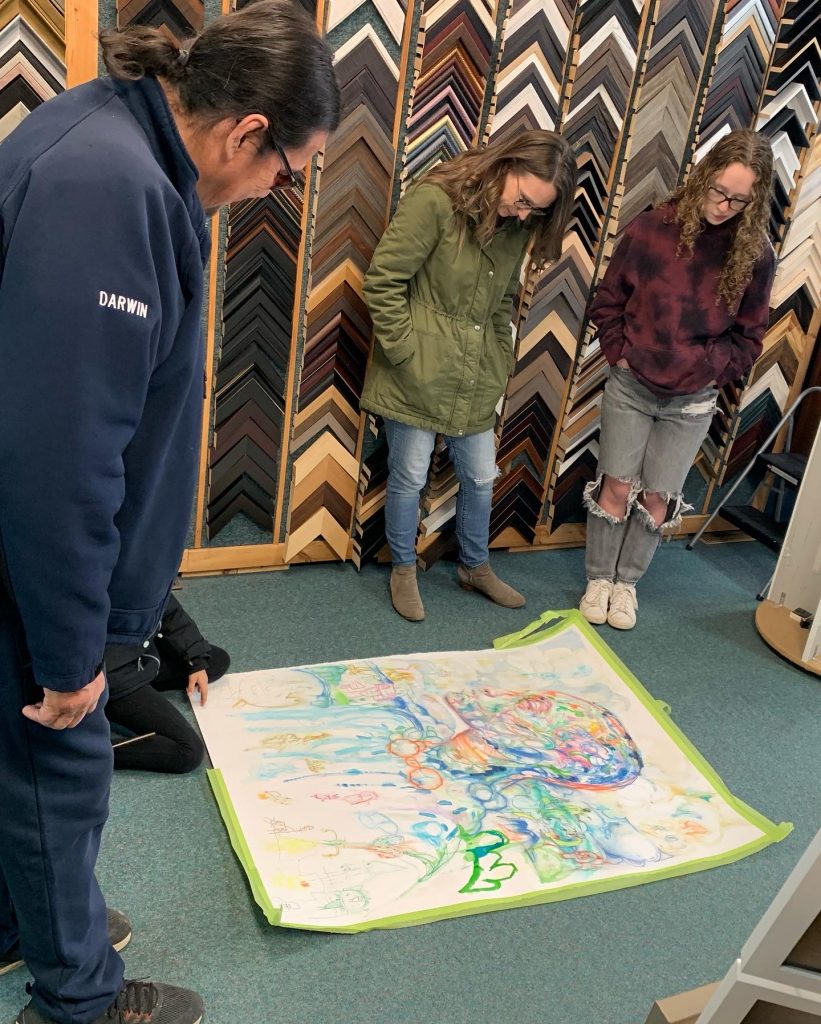
The gallery’s event on Slow Art Day was a featured article in Northeast Now.
Northern Lights Gallery also produces slow looking events throughout the year including their mid-summer “Back Alley Tour,” which encourages participants to look slowly at the work-in-progress of local artists (as well as attend workshops and interactive art making experiences).
You can find Northern Lights Gallery on Facebook and Instagram.
We can’t wait to see what they come up with for next year!
– Robin, Johanna, Jessica Jane, Phyl, and Ashley

